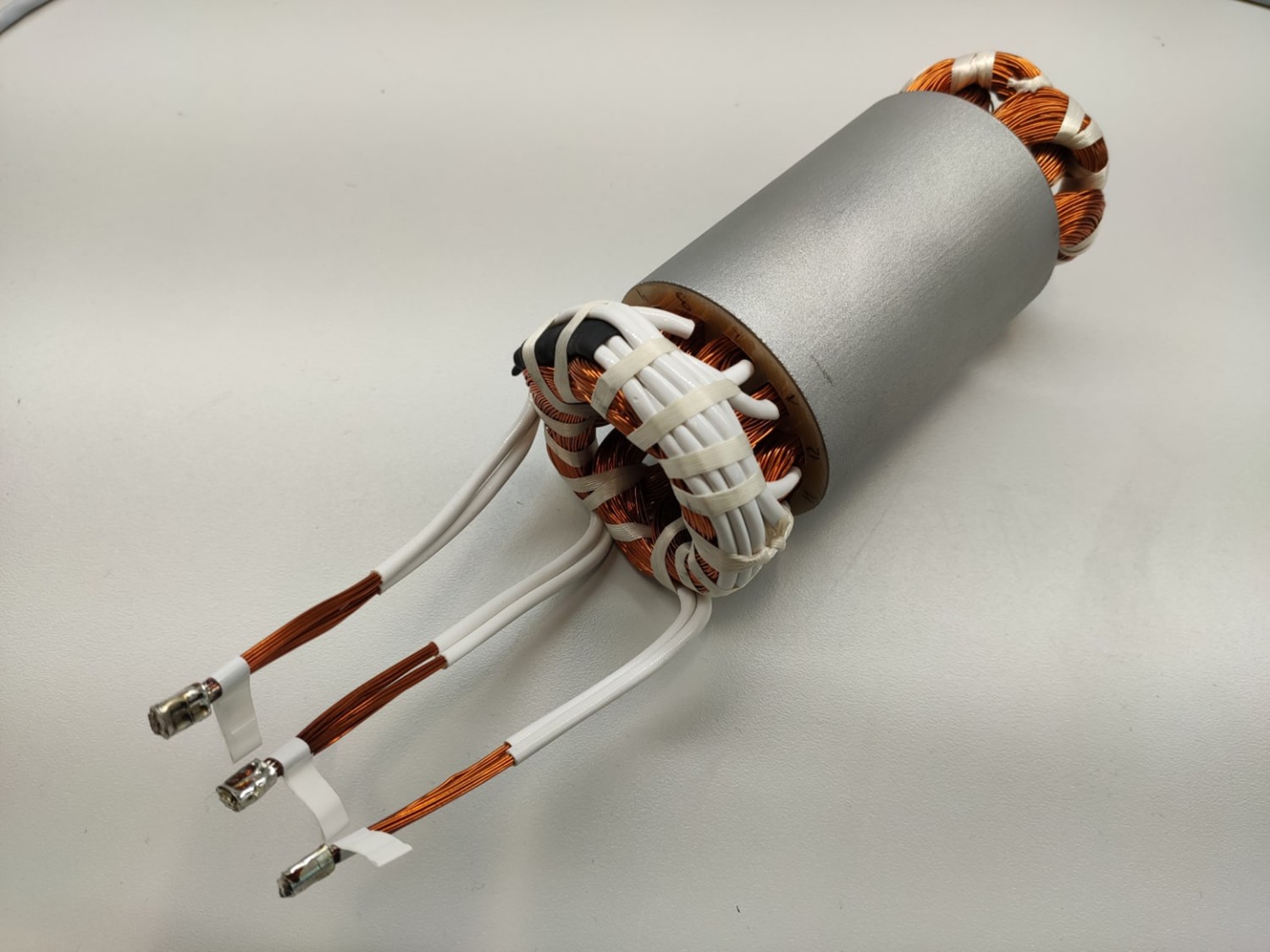
Transportation is the fastest-growing major contributor to global climate change. The sector is now transforming towards climate-friendly powertrains with significantly reduced CO2 emissions. The electrification of powertrains remains a major challenge not only for trucks, buses, trains, and ships but also for aircraft. The fuel cell is an extremely promising energy supplier for these applications, which supplies electrical energy from stored hydrogen and ambient air.
Fraunhofer Institutes LBF, IFAM, IISB, and SCAI joined their forces to develop advanced and highly efficient components for fuel cells. The HABICHT project aims to design and develop a high-speed motor for a fuel cell compressor to enable innovation in the utility vehicle and aviation domain.
The electric machine should at least achieve a power density of 30 kW/kg by using innovative materials for direct cooling of the stator and maximizing the rotor’s high-speed capability (< 150,000 rpm). The rotor design will use a new manufacturing process to glue and pot the magnets to be suitable for high circumferential speeds.
Researchers have so far developed a viable concept for electromagnetic design with analytical and numerical support. The work was carried out in interaction with structural-mechanical investigations on the speed stability of the permanent magnets as well as with thermal investigations on the necessary cooling capacity, which is guaranteed by the combination of cooling jacket, hollow rotor shaft, and thermal connection of the winding head with a dielectric fluid.
In future work, the team will focus on optimization of the current working design and execution in a manner suitable for production. For this, reduced test carriers are to be used for stator winding, electrical insulation, banding, sheet metal cutting, bonding, and magnet shaping, among other things, prior to the construction of the entire system. The formation of cooling channels during potting is to be solved in terms of process and material technology based on the previous literature studies.
The adaptation of the HABICHT machines to an existing turbo compressor is to be realized with suitable but at the same time conventional shaft and bearing technology, whereby the frequency-dependent inherent dynamics of the mechanical moving parts are to be determined in advance.
“The project involves the development of new technologies in the field of high-speed electric drives in the application for fuel cells and sets new standards, which in turn point the way for future developments,” said Prof. Dr.-Ing. Jürgen Ulm from Heilbronn University of Applied Sciences. “The high-speed rotor, which poses a challenge in terms of its mechanical, thermal, and electromagnetic design, is of great importance here. This project is an excellent example of pioneering high-tech product development in conjunction with simultaneous materials, measurement development, and simulation technology.”
Fraunhofer team develops high-speed motor for a fuel cell compressor
Source: Tambay News

0 Comments